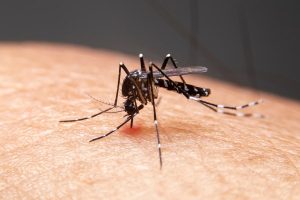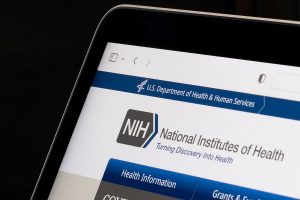Many older Americans have the worrisome and potentially dangerous irregular heartbeat known as atrial fibrillation, or “a-fib,” and they’re typically offered medicines or a surgery called ablation to correct it.
Which works best?
Two new trials may have the answer. Researchers say ablation and medicines perform similarly in protecting a-fib patients from stroke, death and other complications.
However, ablation may beat out drug therapy over the long term, reducing recurrences of a-fib and related hospitalizations for years to come, researchers say.
Patients who got ablation — where a catheter is used to tweak the heart muscle cells responsible for the arrhythmia — also seemed to have less shortness of breath, less fatigue and all-around better quality of life five years later, compared to those who got drug therapy alone.
The quality-of-life trial, “because of its size and duration, provides extraordinary new data regarding the patient’s perspective,” said Dr. Yves Rosenberg.
He was program officer for the study, and is also chief of the Atherothrombosis and Coronary Artery Disease Branch at the U.S. National Heart, Lung, and Blood Institute (NHLBI), which helped fund both trials.
A cardiologist who reviewed the findings said the data should reassure patients.
“I think the takeaway from this study is that catheter ablation is effective and safe for treating atrial fibrillation,” said Dr. Laurence Epstein, who directs electrophysiology at Northwell Health in Manhasset, N.Y.
“If you have atrial fibrillation and are symptomatic, ablation is a reasonable first-line option, as opposed to taking drugs,” he said.
Treatment pros and cons
According to the NHLBI, a-fib affects at least 2.7 million Americans and can lead to stroke, heart failure, and even mental impairment. Symptoms include rapid heart palpitations (“flip-flops” or skips); fatigue; shortness of breath, and difficulty doing physical activity.
“Since current drug therapies often have limited effectiveness in controlling atrial fibrillation, it is very important to understand whether ablation, an invasive procedure, yields better outcomes,” Dr. David Goff, director in the division of cardiovascular sciences at the NHLBI, said in an institute news release.
As Epstein explained, during ablation, “long catheters — wires with electrodes on them — are placed into the heart via the large veins in the groin. Radio waves are delivered from the catheter to the heart muscle, which causes heat and the controlled destruction of the muscle cells responsible for causing atrial fibrillation.”
Sometimes ablation is performed using tiny balloons that freeze the heart muscle to create the same effect.
Of course, no treatment is foolproof. “Depending on the patient the procedure can be as effective as 80-90 percent,” Epstein said, “but in others, at best, 50 percent.”
Many other patients get drug therapy alone to control the aberrant heart rhythm. But Epstein said outcomes are often “disappointing because the drugs do not work that well and that they can cause ‘pro-arrhythmia.’
“Pro-arrhythmia is when a drug used to treat an abnormal heart rhythm can actually cause a worse, more dangerous heart rhythm,” he explained.
Long-term benefits
To settle the meds-versus-ablation debate, the NHLBI helped conduct these two trials, which included more than 2,200 patients treated at 126 sites in the United States, Canada, Asia and Europe.
Half the patients had ablation and half were put on drug therapy, but could have ablation if their a-fib symptoms could not be controlled with medication — something known as “intent to treat.”
In the end, about 27 percent of the patients who started on drug therapy did end up undergoing ablation.
The median follow-up of patients in the trial was about four years.
“While data from the trial did not show that ablation was superior to drug therapy in reducing rates of deaths and strokes, it showed reduced recurrence of atrial fibrillation, as well as reductions in hospitalizations,” Rosenberg said in the news release.
The researchers noted that the overall rate of deaths and strokes was lower than expected. Also, about 9 percent of the patients assigned to receive ablation did not, in the end, undergo the procedure.
So, “when we examined the data according to the treatment actually received, the ablation group had significantly lower rates of death as well as the combination of death, disabling stroke, serious bleeding, or cardiac arrest compared with patients who only received drug therapy,” said study principal investigator Dr. Douglas Packer. He’s a cardiologist and professor of medicine at Mayo Clinic in Rochester, Minn.
The research team found that 12 months after the start of treatment, both groups of patients had at least some improvement in their quality of life. However, those in the ablation group had a larger decline in symptoms such as fatigue and shortness of breath, and their boost in quality of life lasted through five years of follow-up.
At the start of the study, 86 percent of patients in the ablation group and 84 percent on drug therapy reported atrial fibrillation symptoms during the previous month. By the end of the study, only 25 percent of patients in the ablation arm and 35 percent of those on drugs only reported symptoms.
Patients with the most severe symptoms at the start of the study had much greater improvement after ablation than those who initially had mild symptoms, the researchers added.
Dr. Satjit Bhusri is a cardiologist at Lenox Hill Hospital in New York City. Reviewing the new data, he said that the trials give doctors and patients valuable guidance.
First of all, he said, if your a-fib isn’t so bad that it harms your quality of life, perhaps controlling it with medicines alone might work. However, when quality of life is affected, a move to ablation therapy may be warranted, Bhusri said.
For his part, Epstein believes “we certainly need to continue to study these findings. As technology continues to advance, and ablation procedures become safer and more effective, ablation will most certainly become the treatment of choice.”
The papers were published March 15 in the Journal of the American Medical Association.
More information
The U.S. National Heart, Lung, and Blood Institute has more on atrial fibrillation.
Source: HealthDay
Copyright © 2025 HealthDay. All rights reserved.

















